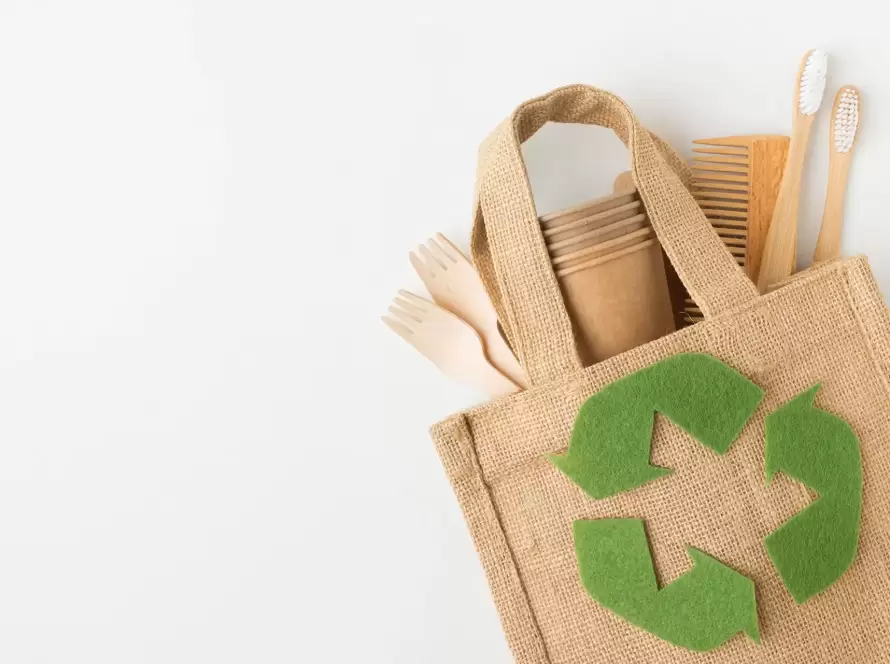PP Woven Bags: A Deep Dive into Properties, Types & Uses

Packaging is one of the most essential elements in any industry, ensuring safety, convenience, and efficient storage of products. Among the various packaging options available today, PP woven bags have gained remarkable popularity due to their strength, versatility, and cost-effectiveness. Made from polypropylene, these bags are now the backbone of industries ranging from agriculture and food to construction and retail.
What Are PP Woven Bags?
PP woven bags are made from polypropylene, a thermoplastic polymer that is extruded into flat tapes and woven into fabric. This woven construction gives the bags excellent tensile strength and tear resistance, making them suitable for carrying heavy loads.
They are available in laminated (coated) and unlaminated (uncoated) forms, each serving different purposes. With their ability to be reused, recycled, and customized, PP woven bags have become a smart and sustainable packaging solution for businesses worldwide.
Properties of PP Woven Bags
The popularity of PP woven bags lies in their unique properties:
- High Strength – Their woven structure ensures they can withstand rough handling and heavy loads.
- Lightweight – Despite their durability, they are easy to handle and transport.
- Moisture Protection – Laminated PP woven bags protect contents from dampness, while unlaminated ones allow breathability.
- Chemical Resistance – Safe for packing fertilizers, chemicals, and industrial powders.
- Reusable & Recyclable – Eco-friendlier than many single-use plastic packaging options.
- Cost-Effective – Affordable compared to alternatives like jute or paper bags.
- Customizable – Available in a wide range of sizes, colors, and printing options for branding.
Types of PP Woven Bags
PP woven bags are manufactured in various forms to meet diverse industry needs. Some of the most common types include:
1. Laminated PP Woven Bags
These bags are coated with a thin film of LDPE or BOPP, making them water-resistant and dust-proof. They are commonly used in the food, agriculture, and chemical industries to protect goods from moisture.
2. Unlaminated PP Woven Bags
Without lamination, these bags remain breathable, making them ideal for packaging products like vegetables, grains, and other items that require ventilation.
3. BOPP Laminated PP Woven Bags
These bags feature Biaxially Oriented Polypropylene (BOPP) lamination, which provides high-quality printing and a glossy finish. They are excellent for branding and retail packaging.
4. Block Bottom PP Woven Bags
Also known as AD*STAR bags, they have a brick-like shape, which makes stacking and storage easier. These are widely used for cement, flour, and fertilizer packaging.
5. PP Woven Sacks with Liners
These come with an inner liner for extra protection against moisture and contamination. Perfect for storing fine powders like chemicals, sugar, or flour.
6. PP Woven Shopping Bags
Reusable shopping bags made from PP woven fabric are now replacing single-use plastic bags. They are durable, eco-friendly, and can be printed with attractive designs for branding.
Uses of PP Woven Bags
PP woven bags have widespread applications across industries due to their adaptability and resilience.
1. Agriculture and Farming
The agriculture sector relies heavily on PP woven bags for storing and transporting products like grains, rice, wheat, seeds, pulses, and animal feed. Their strength ensures safe handling, while laminated options protect against moisture.
2. Construction Industry
Materials like cement, sand, gravel, and lime are often packed in PP woven block bottom bags. Their ability to withstand heavy weights and rough conditions makes them indispensable in construction.
3. Food Industry
Food-grade PP woven bags are commonly used for packaging sugar, flour, spices, dry fruits, and salt. Laminated bags ensure hygiene and protection from dampness.
4. Retail and Shopping
Reusable PP woven shopping bags have become popular in retail and supermarkets. They are strong, eco-friendly, and provide excellent opportunities for custom branding.
5. Chemicals and Fertilizers
PP woven bags are resistant to many chemicals, making them safe for transporting and storing fertilizers, pesticides, resins, and industrial powders.
6. Logistics and Transportation
In logistics, PP woven bags are used as container liners and cargo covers. They ensure safe packaging and transport of bulk materials.
7. Geotechnical Applications
They are used in geotextiles for erosion control, flood protection, and soil stabilization, proving their importance in infrastructure projects.
Why PP Woven Bags Are Preferred
When compared to other materials, PP woven bags offer a unique blend of durability, affordability, and sustainability:
- Stronger than paper bags, which are prone to tearing.
- More affordable than jute bags, yet highly durable.
- Reusable and recyclable, unlike many single-use plastics.
- Lightweight yet tough, reducing logistics costs.
Their combination of strength, versatility, and eco-friendliness makes them the number one choice for industries worldwide.
Sustainability and Environmental Benefits
While plastics often face criticism for their environmental impact, PP woven bags stand apart due to their reusability and recyclability. By encouraging multiple uses, they reduce the need for single-use packaging. Additionally, manufacturers are increasingly adopting eco-friendly production techniques and biodegradable coatings to minimize harm to the environment.
Businesses and consumers alike are turning to PP woven bags as a step toward sustainable packaging practices without compromising on performance.
Final Thoughts
PP woven bags are far more than just packaging they are a dependable, cost-effective, and eco-conscious solution trusted by industries across the globe. With their unique properties, wide variety of types, and versatile applications, they have become a cornerstone of modern packaging.

